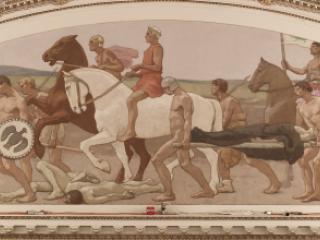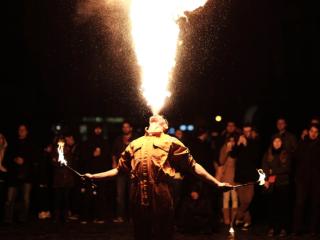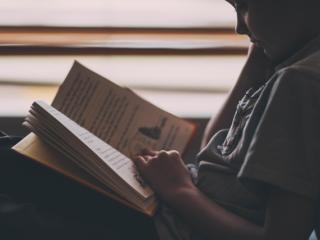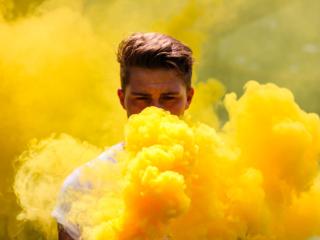Heather Swan is a writer with a gift for listening to the natural world. Still, she didn't know what to make of the barred owl who came to visit her every day for three weeks. And then she realized, with a jolt, the owl had a message for her.More
Interviews By Topic
Why do humans still wage wars? Despite their terrible costs, they benefit certain groups, and thoughout history, they've also galvanized social movements and sparked scientific advancements. Margaret MacMillan explains how wars have shaped us.More
Merle was smart, obedient, and always up for an adventure — the kind of dog you can take anywhere. But even the most cherished dogs grow old. A friend suggested that essayist Sarah Miller get a “bridge dog" — a young dog who might make Merle’s impending loss easier to bear.More
Laura Ingalls Wilder insisted that every detail in her beloved "Little House" books was true. But Caroline Fraser, her biographer, says Wilder heavily edited the story of her family's life on the Great Plains. And in the process, created an American myth based on a lie or two.
More
TTBOOK producer Charles Monroe-Kane is a great storyteller who's led an adventurous life. Here's a wild story from his memoir "Lithium Jesus" about smuggling mob money when he lived in Prague in the 1990s.More
Alissa Quart recommends Elena Ferrante's "Days of Abandonment" and Elizabeth Hardwick's "Sleepless Nights."More
Can a better life story make you happier? Psychologist Tim Wilson thinks so, and he describes a technique he calls "story-editing" to create a more hopeful and meaningful life narrative.More
Storytelling is all the rage these days — and everyone seems to have a life narrative. But not philosopher Galen Strawson. He says life stories often create an inauthentic version of ourselves.More
Legendary poet and singer Patti Smith has two selves. On stage, she revels in collaborating with the people around her and creating a memorable performance. But she reveals a very different self in her memoir "M Train." More
Prince Marfo is the Suyani Cultural Director of Ghana. He says his government needs to do a better job of welcoming African Americans — he wants to see them welcomed as sisters and brothers not just as Americans with resources.More
It's one thing to imagine the intelligence of a forest, but could you experience it? The Japanese concept of "forest bathing" might help. Forest guide Amos Clifford is a former Zen teacher who's one of the world's experts on forest bathing.More
Richard Powers’ “The Overstory” has overturned a lot of conventional thinking. Though human characters shape the plot of this 500-page epic, the real heroes are trees.More
Suzanne Simard is a forest ecologist who's revolutionizing our understanding of trees. She has discovered that trees use underground networks to communicate and cooperate with each other. It turns out that whole forests can exist as a superorganism.More
There's a famous sequoia named General Sherman that's the biggest tree on the planet. It has its own distinctive history linked to the Civil War general and a radical anarchist group. Cultural historian Daegan Miller tells this fascinating story.More
Ethnobotanist Gary Paul Nabhan has been called the “father of the local food movement.” Many of his insights come from the farming practices of Indigenous people living near the U.S.-Mexico border, who’ve grown food in arid habitats for centuries.More
Locking eyes with another creature in the wild can be a profound experience. For physicist and writer Alan Lightman, half a second of eye contact with a pair of ospreys felt like an epiphany.More
In Chicago, writer Gavin Van Horn and environmental artist Jenny Kendler visit her new art installation, which confronts viewers with the gaze of 100 giant bird eyes. It's meant to provoke curiosity, wonder, and awareness of how many non-human eyes are always watching us.More
There are two famous moments that helped shape environmental politics. Gavin Van Horn, of the Center for Humans and Nature, tells us what happened when Aldo Leopold met the eyes of a dying timber wolf and when Paul Watson looked into the eye of a dying sperm whale.More


















